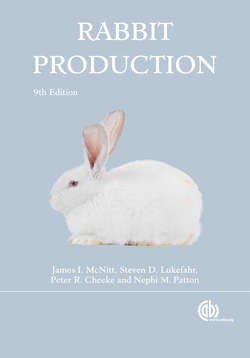Читать книгу Rabbit Production - James I McNitt - Страница 24
На сайте Литреса книга снята с продажи.
Future World Rabbit Production
ОглавлениеThere is little doubt that rabbits could become important meat animals in many countries, particularly in developing nations with high human population density and a shortage of high quality grains and plant protein sources. The purpose of raising livestock is to convert low quality fibrous vegetation to a higher quality human food (meat). Rabbits offer a number of advantages over other livestock in this conversion process. Whether the potential of rabbit production is realized depends on several factors, including research to bring actual productivity closer to the potential limits and increased consumer acceptance of rabbit meat. It is virtually a worldwide phenomenon that rabbits are viewed as cute creatures, and many people who readily accept the slaughter of chickens, cattle, and other livestock find the idea of slaughtering and eating rabbits difficult to accept.
Consideration of recent trends in rabbit production suggests that Europe will continue to be the stronghold of rabbit raising, with a viable industry based on strong consumer demand for rabbit meat, although the increasing popularity of rabbit production in Asia could likely surpass present trends in Europe. Growth of the North American industry, where rabbits are mostly found in small numbers in back yards or on small farms will likely be modest. Rabbit meat in the United States is in competition with abundant other food resources, particularly the highly sophisticated and automated poultry industry. Rabbit raising is labor intensive and well adapted to small-scale backyard self-sufficiency situations, suggesting that it could increase in importance in low income areas where abundant inexpensive labor is available. Much of the developing world in Africa, Latin America, and Southeast Asia is in that category, and increases in rabbit production in these areas appear likely.
